Vegetables to plant in June: 10 tasty crops to sow, plant and grow
Our pick of the best vegetables to plant in June means you can enjoy yardlong beans, turban squash, yellow cauliflower and more
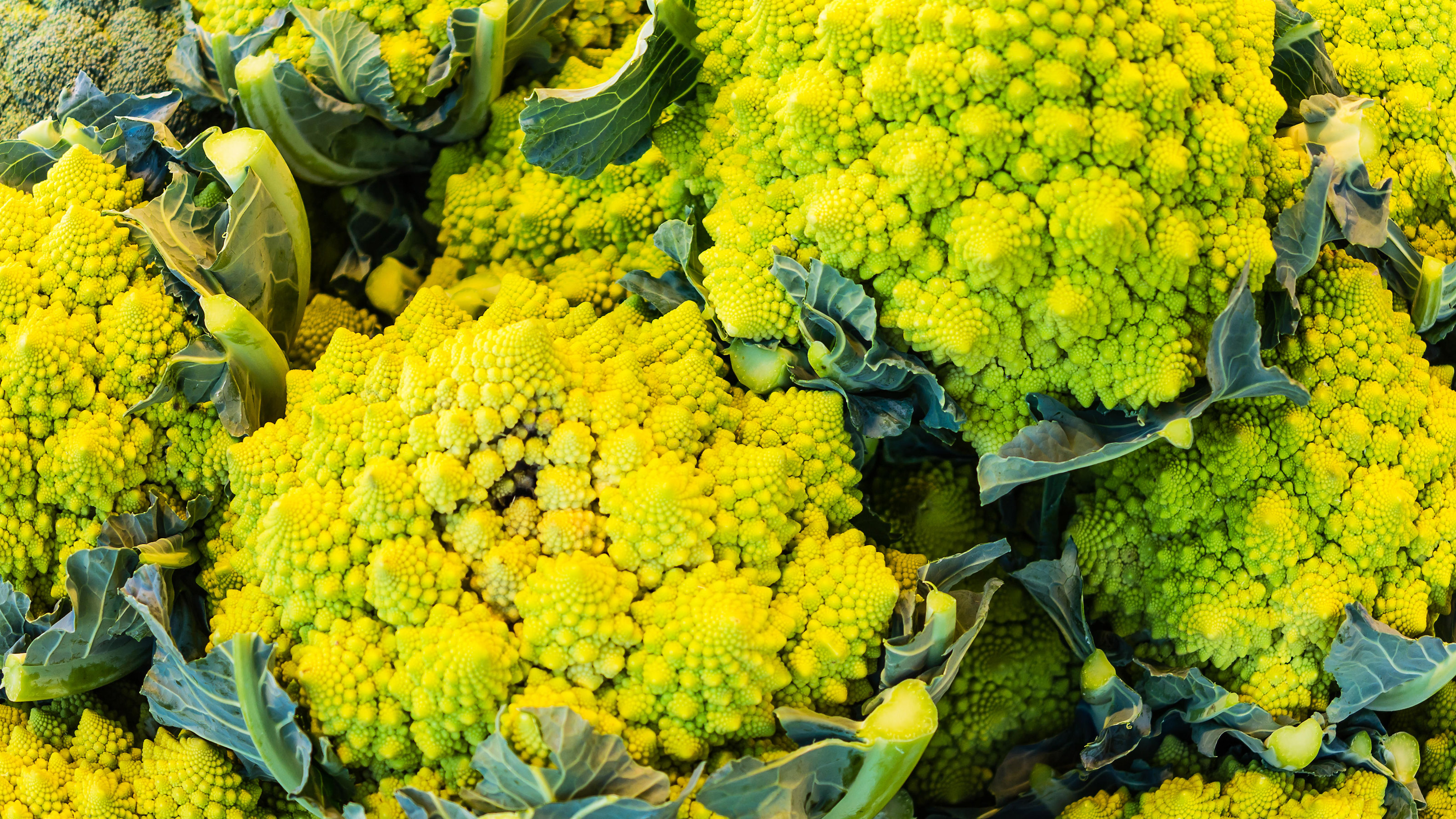

Choosing the best vegetables to plant in June is a juggling act – but an enjoyable one, as you weigh up the relative advantages of warmer days against the increasing demands for space, hydration, weeding and feeding.
As things start hotting up on the vegetable patch, it’s time to think laterally with different groups of crops: those started in spring that must now be planted out, those already planted that may be accelerating in growth, those you held off sowing until now that can now be started, and those that will use the next few weeks to really come into their own.
A key date this month is the summer solstice (21st June). Up to this date, your goal should be to capitalize on every extra hour of growing time, both in your garden and in your undercover areas.
This month marks an intense period in the vegetable planting calendar, for it is the last chance for planting brassicas like Romanesco cauliflower, the first chance for planting out earlier sown crops like turban squash – and the absolute best time to direct-sow crops like Florence fennel and start pak choi, which would likely struggle (or fail) if started any sooner.
Make sure you maintain ample support for climbing and trailing plants like squash and beans. Check all irrigation supplies are clean, fresh and well within easy reach, so thirsty crops get all the soaking they need. And keep a close eye on any areas where you are growing under glass so you prevent heat stress. Ensure greenhouses are well-ventilated to prevent rots and diseases, and try damping down to maintain optimum humidity levels.
Then just follow our rundown of the 10 most reliable, prolific and dynamic vegetables to plant this month – and you’re set for months of delicious harvests all through summer and well into the fall.
Try these vegetables to plant in June for months of tasty harvests
From delicate herbal borage to lush and bulbous fennel, our round-up of vegetables to plant in the month ahead will help you start your summer as you mean to go on.
1. Cornichon cucumber
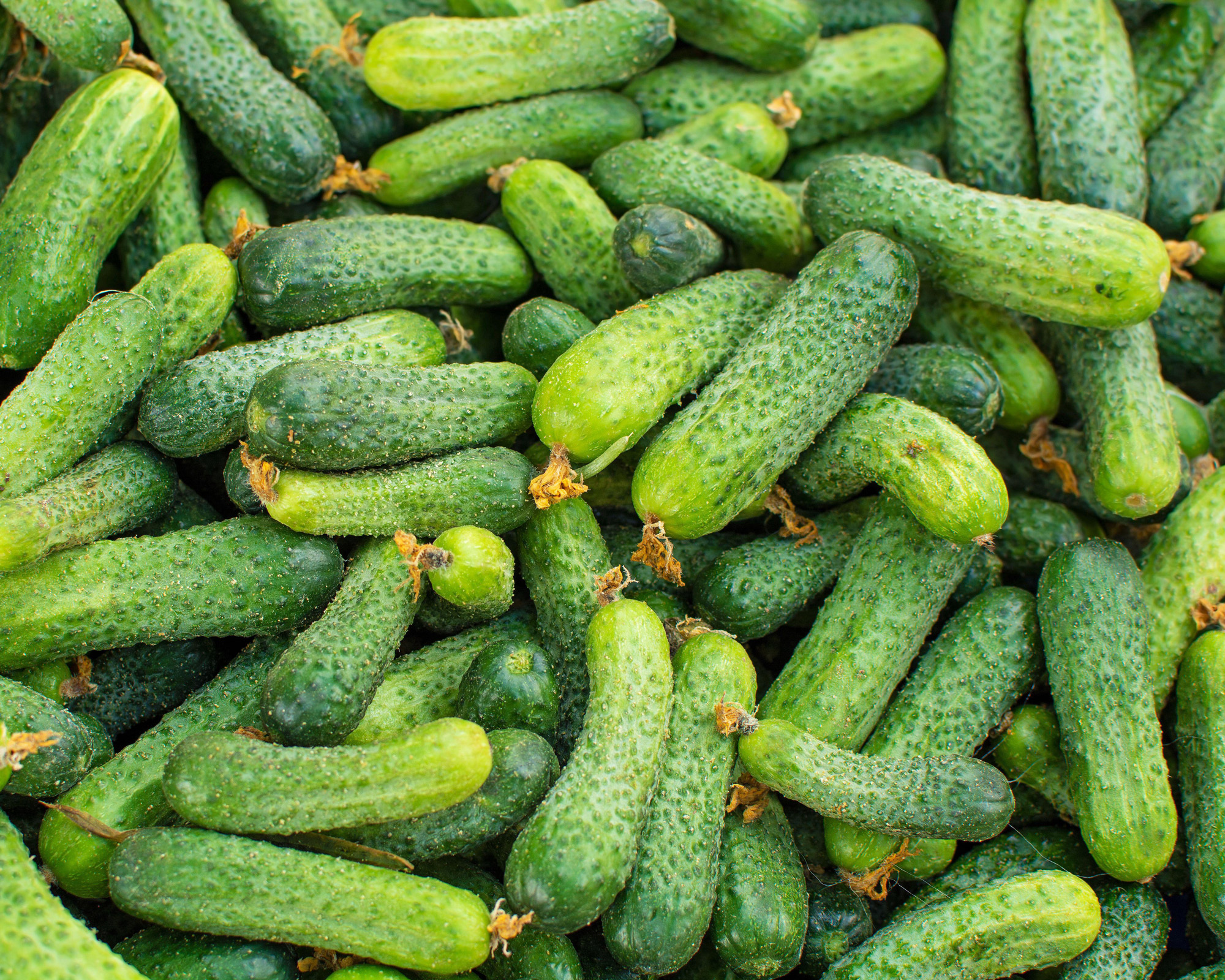
Mini ‘Vert Petit de Paris’ is a cornichon cucumber that is specially bred for pickling
For those who have never come across the word ‘cornichon’ (‘little horn’) before, don’t panic! You’ll be delighted to discover that these are some of the easiest vegetables to grow – and if you know how to grow cucumbers, there are no fiddly extras to fret about.
As Amateur Gardening’s veg expert Lucy Chamberlain explains, these prolific pickle-makers look after themselves. Given their stature, they are ideally suited to both sunny beds and indoor growing – so if you are after something a little different to plant in a greenhouse, look no further.
Pickling cucumbers are also ideal for container gardening ideas, sowing one seed per pot at 18-21˚C (64-70˚F) and supporting well. Just water and feed weekly with a high-potash feed, and make sure they get plenty of sunshine and ventilation. Heirloom ‘Vert Petit de Paris’ is ideal for beginners, and other excellent pickling varieties include ‘Boston Pickling’, ‘Calypso’, ‘Sassy’, ‘Eureka’ and ‘Picklebush’.
Fruits can be harvested 12 weeks after sowing, when finger thick (check plants daily once cropping begins). Cure in salt, rinse, bottle in vinegar and seal with aromatics. Then just add to your burgers and gourmet sandwiches for a lip-smacking treat you are sure to relish.
2. Tree spinach
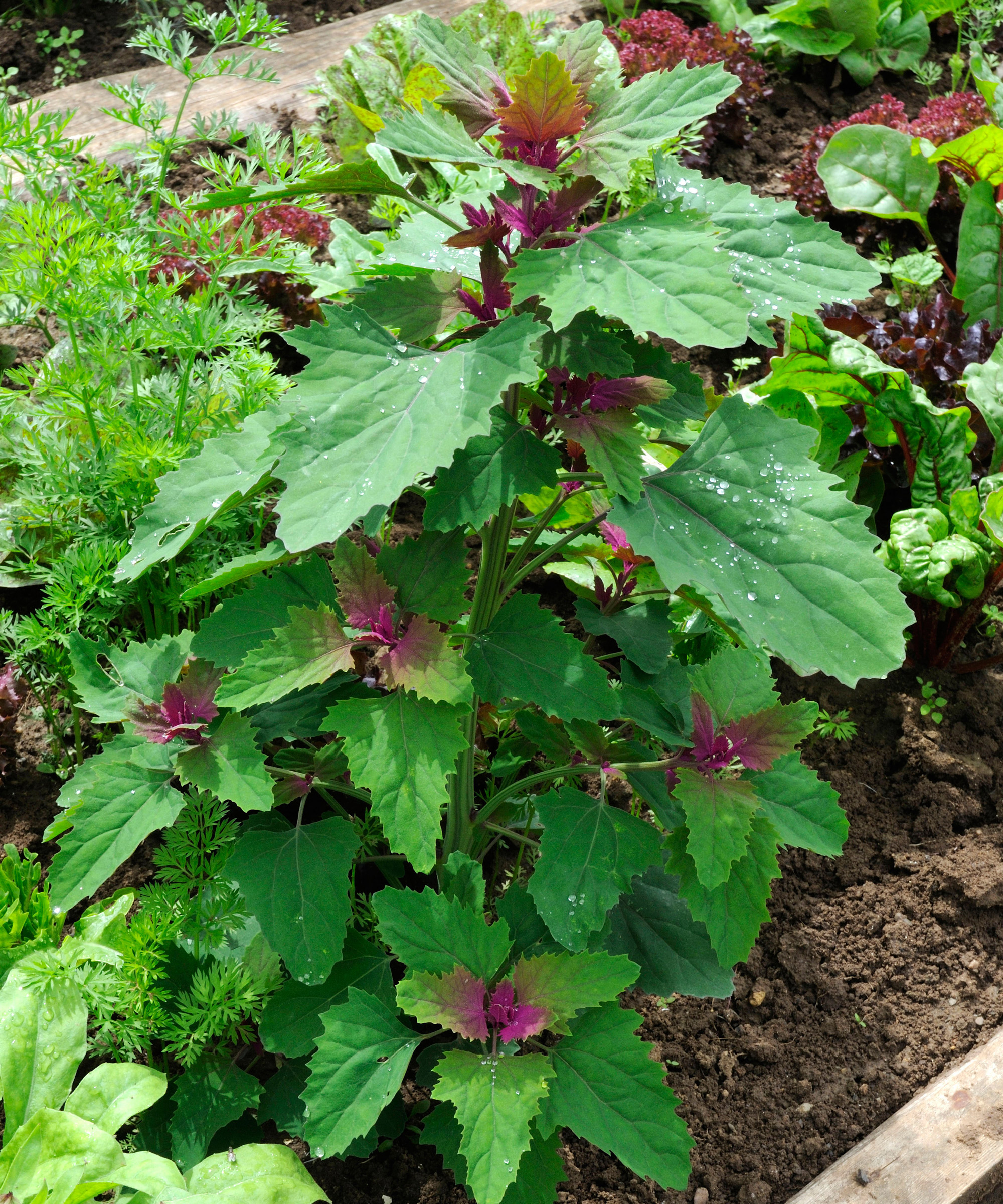
Highly decorative, robust and self-seeding, the Mexican tree spinach is a pretty edible for kitchen gardens and backs of borders
The Mexican tree spinach or ‘glitter spinach’ is one of those necessary treasures in the kitchen garden – a stunning bush beauty with blue-green foliage and pink midrib, an easy-going temperament, and a self-seeding tenacity that guarantees years of edible efficiencies. And yes, the leaves do sparkle!
Similar to its close relation, the fat hen, the industrious tree spinach (Chenopodium giganteum) fills out handsomely in moist, fertile soils, yet can also thrive in the most arid spots.
June is the perfect time to start off tree spinach (aka purple goosefoot or giant lambsquarters) from seed. Although it is fine to start in situ, it’s preferable to start underglass in modules and plant out later (adding compost to kickstart growth).
This gives more control over where it grows (and how much), since unchecked this leafy perennial shrub has a tendency to take over (it can reach 6.5ft/2m). And while it loves warmth, Chris Bonnett of Gardening Express recommends shade to protect it from direct sun, as well as regular watering to counter dry spells. Unlike a lot of June-grown crops, it is best not spoiled with overfeeding.
With varieties including ‘Magenta Spreen’, this pretty shrub is a glam planting partner for chillies, and if you are growing radishes it is an ideal companion. Harvest the young crystalline shoot tips as a bountiful cut-and-come-again baby leaf salad, or steam larger leaves with butter. Decorative and nutritious, you can pinch out the growing tips for a bushier mass of twinkling delights.
3. Wok broc
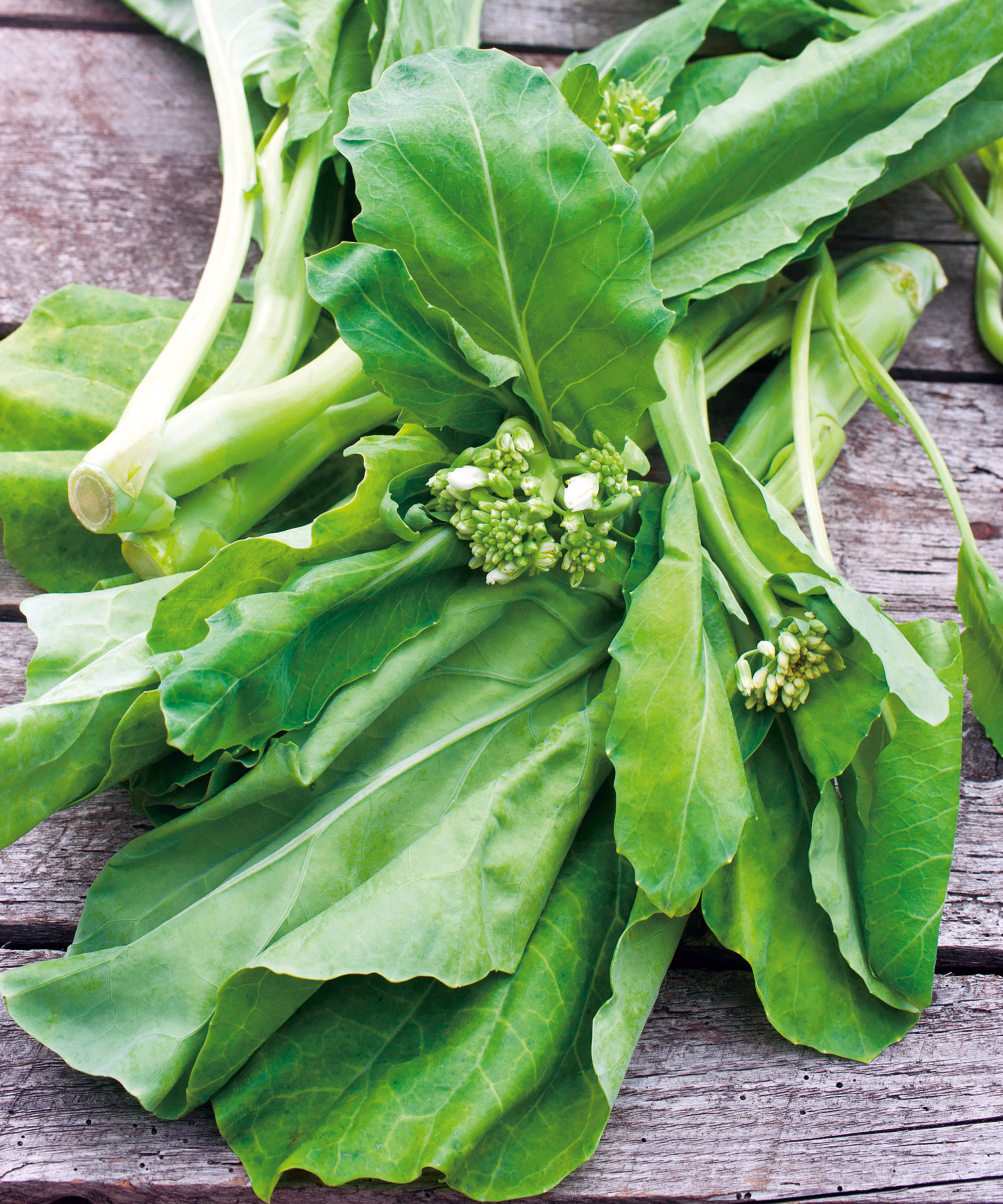
Chinese broccoli (aka wok broc) such as ‘Kichi’ from Suttons is a versatile superfood comprising nutritious stems, buds and leaves
Stir-fry aficionados and superfood enthusiasts will love this entry in our round-up of vegetables to plant in June.
Tasting like a cross between kale and broccoli, wok broc will appeal to anyone with an interest in unusual leafy greens. If you have tried your hand at mastering how to grow calabrese or you have a passion to grow kale or sprouting broccoli, Chinese broccoli (Brassica oleracea var. alboglabra) is a must-have with its nutritious blue leaves, buds and fat edible stems – and bees love the flowers. Also called kai lan, its earthy flavors work well with oyster sauce and garlic seasoning.
Sowing in successive bursts every three weeks from June to September, you can make the most of this veggie’s quick-maturing potential to ensure constant harvests well into the fall.
Choose crispy-stemmed ‘Suiho’, mildew-tolerant ‘Kichi’ or bolt-resistant ‘Early Jade’. Either start some outdoors in finely raked earth, or in large pots kept in a cool greenhouse. After planting outside, thin plants once they are 4in (10cm) tall. Taking only eight weeks to cultivate, this robust superfood makes the ideal planting pal for peas, beans, carrots, cucumber and beetroot – just keep the planting site well watered and free from weeds.
High in vitamins A and C, calcium and iron, wok broc is an easygoing crop that thrives in cool or mild climates (zones 2-10) but can also cope with temperatures to 95˚F (35˚C). Throw in lots of organic matter, plus a good mulch to retain moisture and keep these oriental greens cool and lush.
4. Turban squash
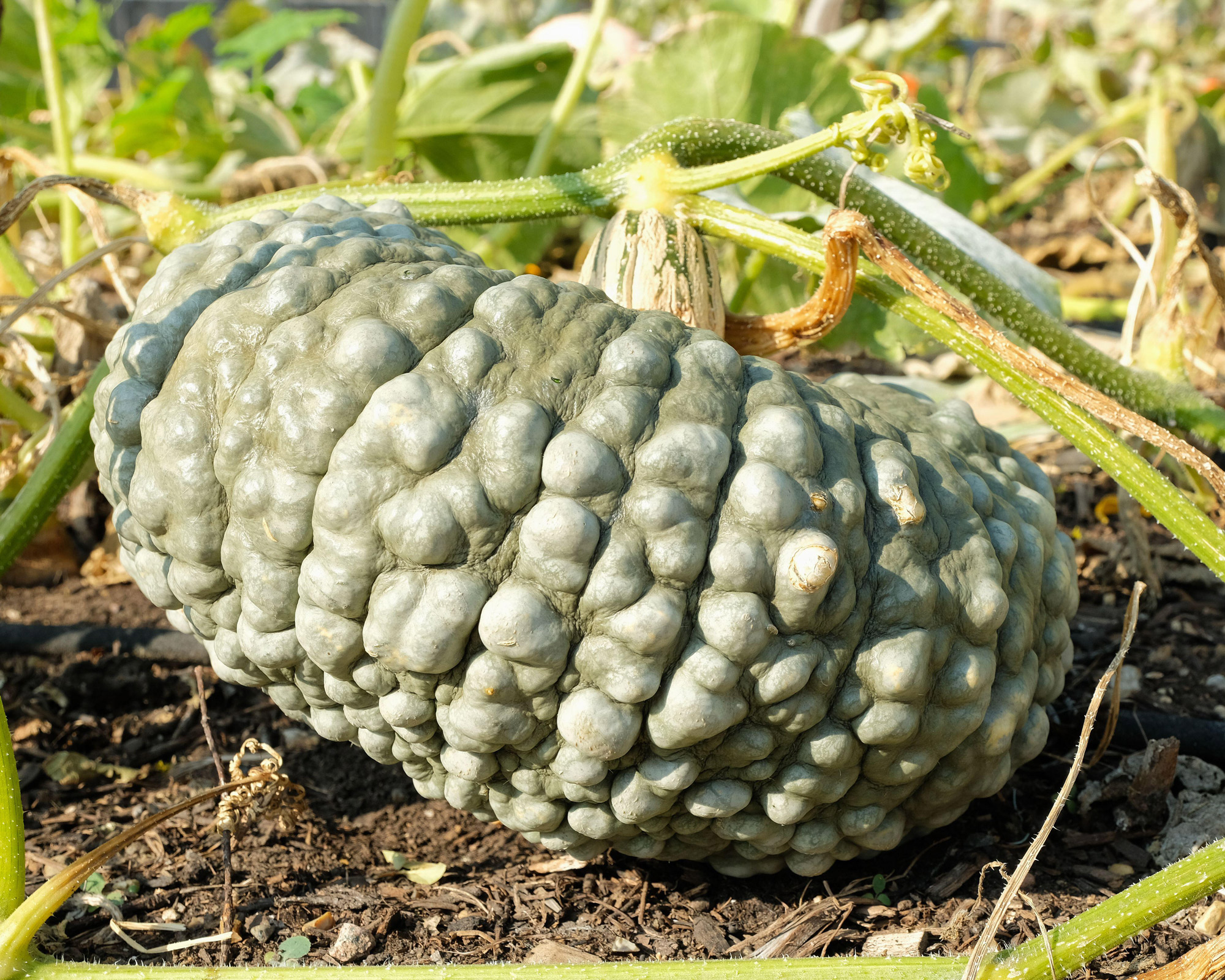
Hat’s off to the ‘Marina di Chioggia’ turban gourd for its compelling visual dynamics as well as its sweet fleshy center
With its sculptural outer skin and cheeky muffin top, the turban squash certainly stands out from the crowd on the veggie patch. Ranging in color from rich orange to deep green, it can look otherworldly with its mottled, knobby protrusions and strange top-heavy load, but slice through to the fleshy deep and there’s plenty of luscious goodness to enjoy. Also known as Turk’s turban, turban gourd or Mexican hat, this squash (Cucurbita maxima) is ideal to grow in zones 3-10, making it an obvious (if unusual) choice for our vegetables to plant in June.
This month presents the option of direct-sowing your squash or planting out seedlings you may have started undercover or acquired as plugs. As with other running squash, the main considerations are space, sunshine and moisture. Incorporate inventive trellis ideas or creative climbing plant supports to support trailing stems and lily-pad leaves – or bury vines intermittently to trigger another root system for your turban beastie boys.
Incorporate paving slabs to prevent fruit rot, plus upturned pop bottles well filled with water and a high potash feed once fruits swell, as well as a good mulching to keep things cool and well nourished.
If you are looking to grow sweet corn and beans, this is the perfect planting partner. Pinch out tips when 6ft (1.8m) long to help fruit set. Full maturity can take 120 days, but the returns are worth the wait – and this nutty, crusty, sun-loving cropper will provide a brilliant talking point. Try two-tone ‘Mini Turban’, striped orange and pink ‘Fungo’, and otherworldly ‘Marina di Chioggia’.
5. Borage
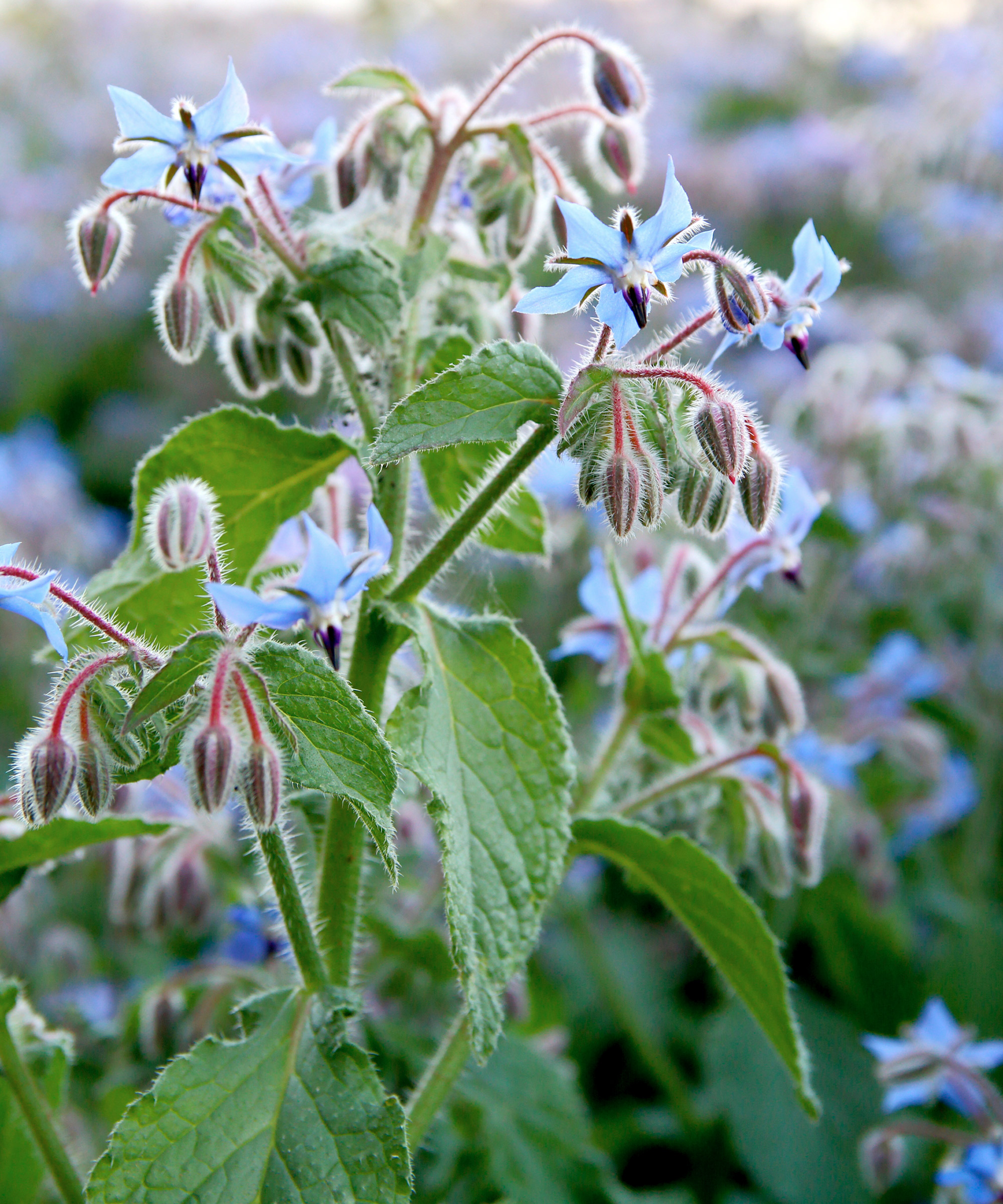
Borage seed mixes such as this one from Suttons enable you to grow cucumber-fresh leaves and pretty edible blooms
Commonly known as the star flower, borage (Borago officinalis) has star quality in all manner of situations. While it has an invaluable role in the kitchen garden, it wouldn’t be out of place in a cottage garden, potager or a wildflower meadow style garden.
With its lavender blue blossoms, it is amongst the best bee-friendly plants you can grow. And as part of the Boraginaceae family, this annual edible is also widely acknowledged as one of the best herbs to grow in your garden.
As the elegant relative to hard-working comfrey, borage blooms are some of the best edible flowers to grow; evocative of cucumbers, and popular as a pretty garnish in a glass of Pimm’s.
Sow direct in well-draining, slightly acidic soil and make sure young plants get five hours of direct sunlight daily. For those who grow tomatoes, cabbage, courgettes and squash, borage makes a charming companion. This drought-tolerant herb also suits strawberries, repelling pests and attracting beneficial insects like lacewings.
In addition to harvesting flowers, you can sauté young leaves and chop up stalks (loaded with iron, potassium, calcium and vitamins A and C) for a fragrant extra to soups and salads. As they die back, older leaves make a healing mulch for other plants on the plot. Amateur Gardening’s Anne Swithinbank also recommends using some leaves to formulate a nourishing liquid feed to keep the rest of your garden ticking over nicely.
6. Florence fennel
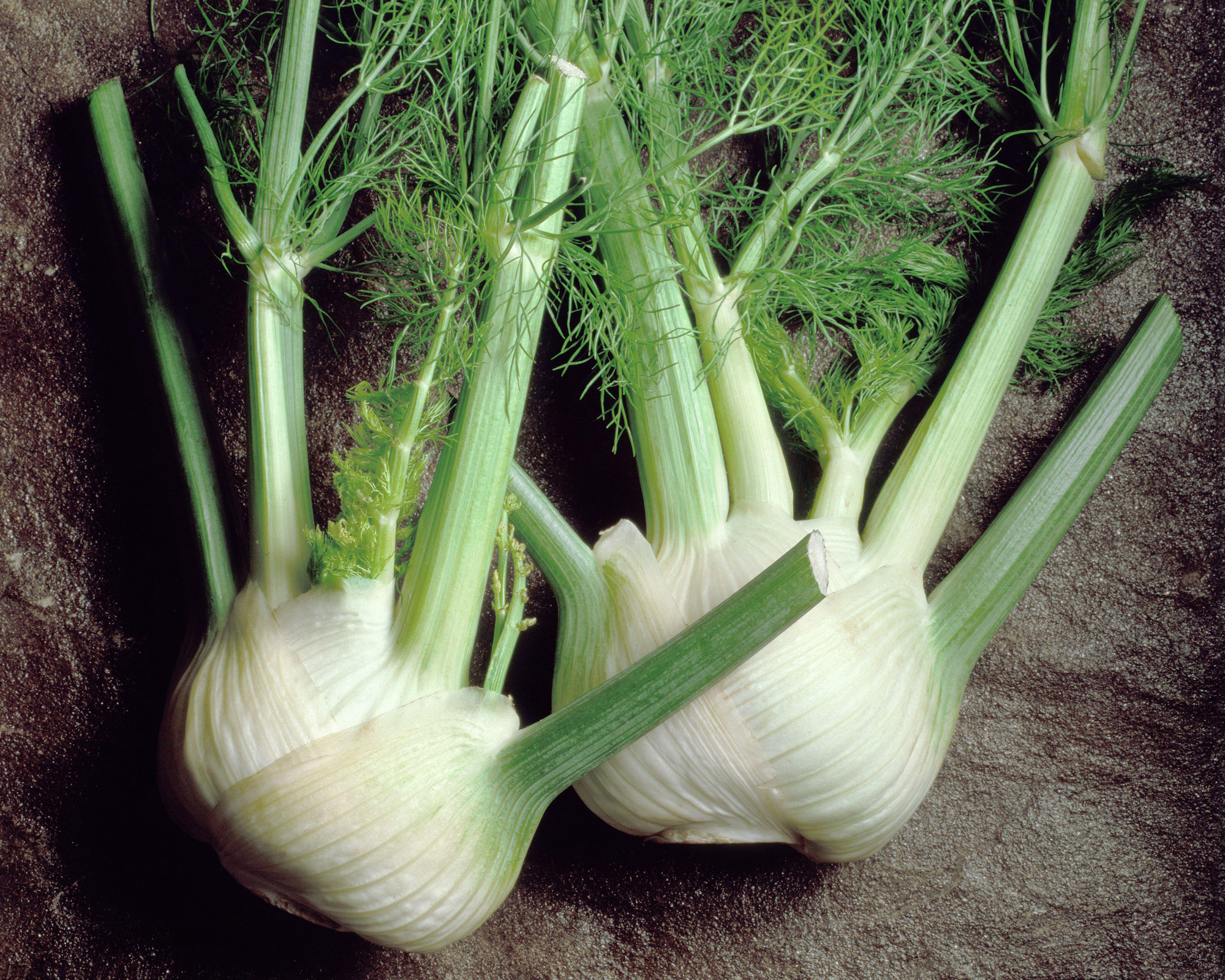
Florence Fennel ‘Sirio’ is a compact plant capable of developing solid, sweet bulbs with a distinctive anise flavor
With some plants, there is a bit of latitude about when you plant them. That isn’t the case with the next entry in our list of vegetables to plant in June. Put simply, the time is now – or, to be exact, after summer solstice. Although one might be tempted to start Florence fennel sooner, they either catch chills before the last frost has passed or bolt if exposed to high, dry summer as they swell. And if sown later, there won’t be time to bulb up. But planted in late June, Foeniculum vulgare var. azoricum reaches maturity as it enters the fall months – for peak anise intensity.
As Lucy Chamberlain explains, late June sowings are your ticket for lush fennel flavors. ‘This veg needs ample moisture and plenty of time to swell up,' says Lucy. That long growing season and thirsty nature are your prime drivers for success.
Add organic matter to lighter soils, sow into a shallow drill, and water in well. Once seedlings emerge, thin to 5-6in (13-15cm). If you know how to grow potatoes, you will find it also helps to ‘earth up’ bulb fennel (as you do with spuds) to blanche bulbs and keep them cool. Then keep weed-free and water plants liberally until autumn harvests.
Quick-maturing ‘Zefa Fino’, crunchy ‘Montebianco’ and compact ‘Sirio’ are equally at home in a potager garden, raised beds or allotment. Just one word of caution for companion planting lovers: Florence fennel secretes a compound that kills growth in surrounding vegetation. That said, it does attract hoverflies to help other plants – from a safe distance!
7. Red chicory / radicchio
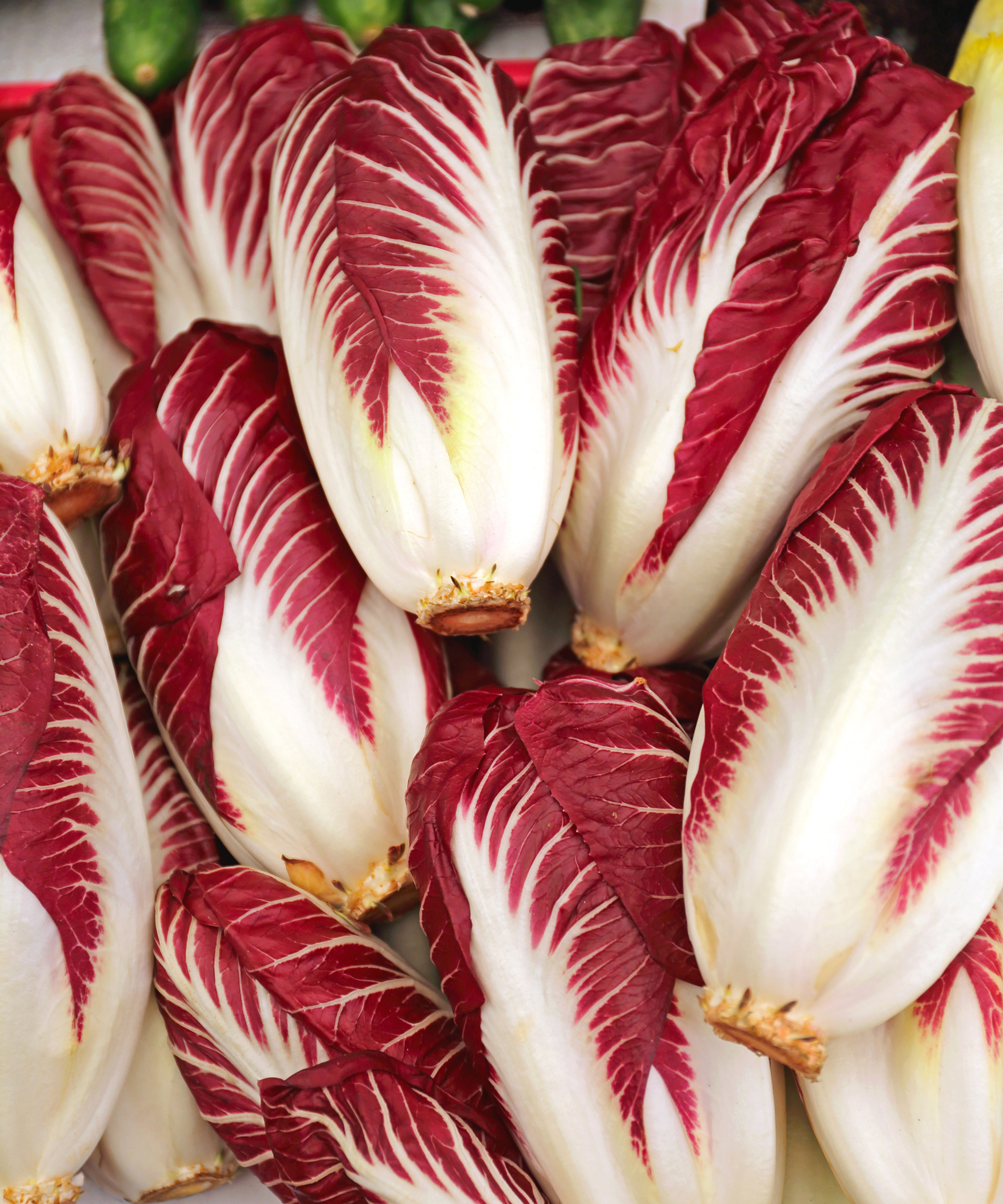
Crunchy ‘Rossa di Treviso’ from Suttons becomes increasingly red in tone as the summer weather cools
Salad lovers looking to liven up leafy harvests should look no further than Italian chicory (aka radicchio or red chicory). Ideal for small vegetable garden ideas and raised garden beds, these vibrantly veined perennial parcels are another key sowing for the summer solstice.
For those unfamiliar with this end of the chicory family, radicchio (Cichorium intybus var. foliosum) presents an impressive range of varieties, including ‘Rossa di Verona’, ‘Rossa di Chioggia’ and ‘Rossa di Treviso’, with shapes ranging from footballs to large tulips and patterns from deep thick ribs to crunchy red spatterings.
Late June offers the optimum growing conditions for plants, which develop quickly and romp away in sunny spots with partial shade and moist, well-draining soil topped up with aged compost.
Starting under glass in a cool greenhouse is the best way to regulate temperatures as you want to avoid extremes, and it’s better weeding around transplants than tiny chicory seedlings. When planting out, space 8-10in (20-25cm) apart, water well and allow crops to burgeon as summer slides into fall – the golden time for prime Italian salad staples. Radicchio is happiest at mild temperatures of 65˚F (18˚C). June is also a good time to start specific red varieties for forcing winter harvests.
Red chicory are ideal companion plants for carrots and grow happily alongside onions and beets. Soften some of the characteristic bitterness of harvested radicchio by soaking leaves in iced water before drizzling in balsamic, or adding lightly grilled or roasted hunks to risottos and soups.
8. Pak choi
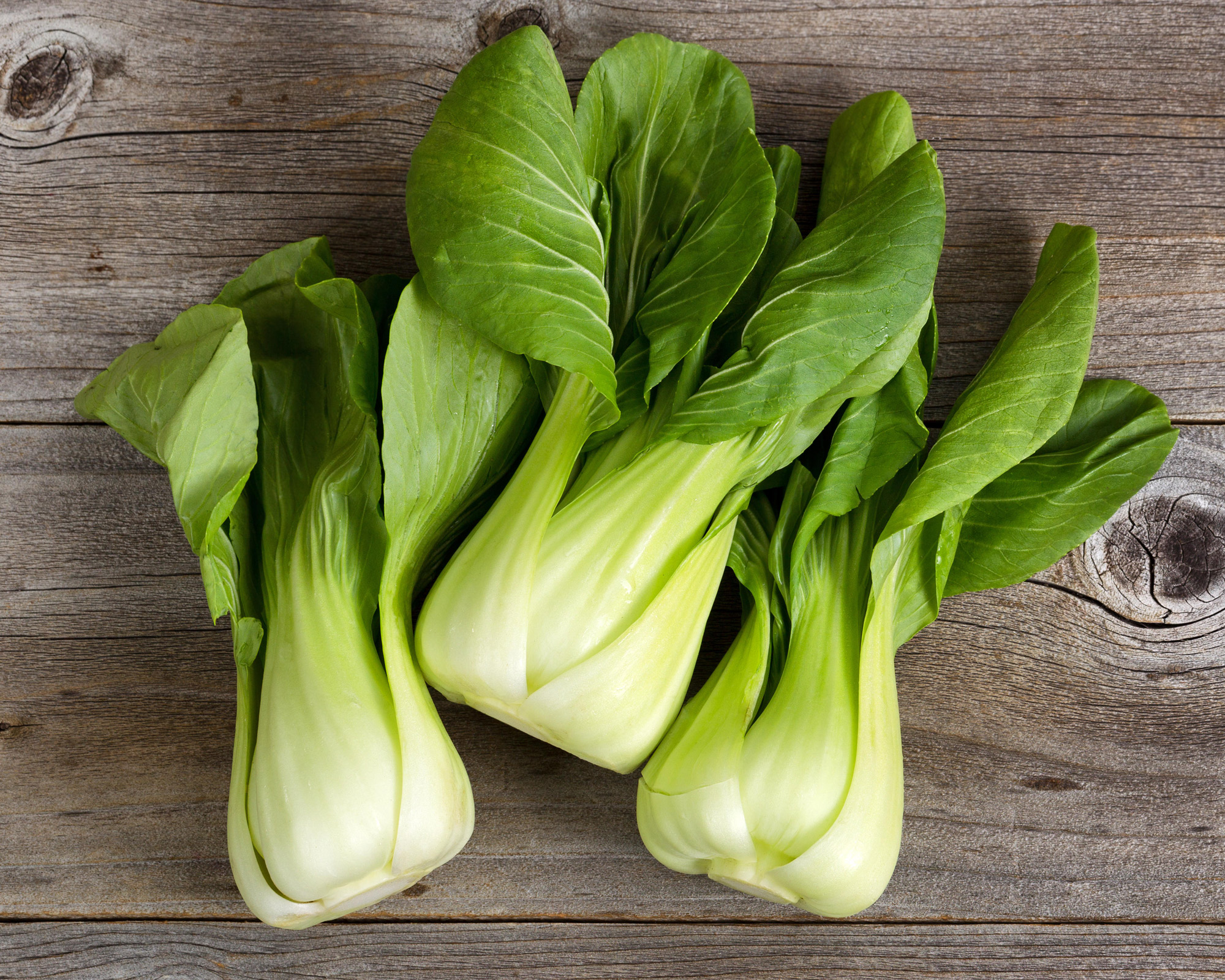
Pak choi ‘Green Revolution’ is a long season leaf that is resistant to yellowing and delicious steamed
Pak choi, bok choy, spoon cabbage or horse's ear: there’s something inherently moreish about this next choice on our June planting list.
Chinese cabbage (Brassica rapa) has been grown in the Far East for 1500 years – whereas we have only recently cottoned on to the delights of this plump nutritious stalwart with the bulbous bottom that works so well in stir-fries and steamed dishes.
As with bulb fennel, there is a danger in growing this leafy green earlier in the year. Amateur Gardening’s Bob Flowerdew explains: ‘Some crops do best sown over the coming weeks: pak choi is a prime example, as it tends to bolt otherwise.’
Started in June, and sown every three weeks to September, you can ensure burgeoning crops reach their full potential. To get the most from emerging plants, avoid intense heat: select a spot that benefits from both long periods of warmth and partial shade. Pak choi prefers not to be moved, so sow in situ with short drills in moist, finely prepared soil. Given their needs, these oriental greens make perfect companion plants for potatoes and beans – and if you wish to grow nasturtiums, mint or cilantro, these crops also work well in tandem.
Keep well watered and incorporate a cloche or polytunnel to counter dry spells, and expect a lush, soft harvest in six weeks for baby leaves or two months for plumper returns. Leaders of the pak include crisp ‘Joy Choi’, glossy ‘Green Revolution’, bolt-resistant ‘Blizzard’ and pretty ‘Rubi’.
9. Yardlong beans
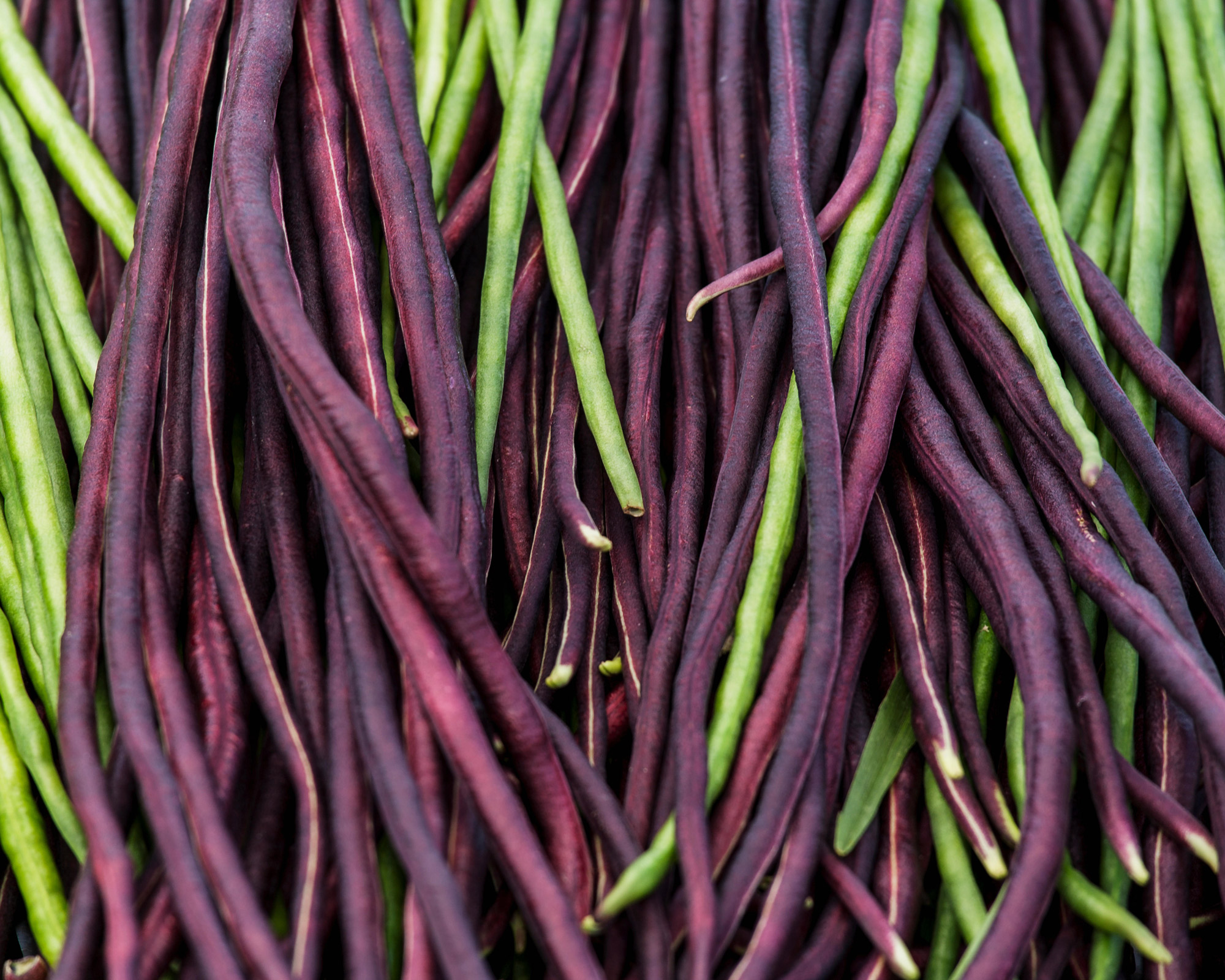
With ample sunshine, support and hydration, yardlong beans will reward your patience with colorful skipping ropes of legumes
If you can’t believe beans can grow to three feet in length, it’s time you get acquainted with the asparagus or yardlong bean: dynamic relation to the black-eyed pea.
Also known as the long-podded cowpea, Chinese long bean or snake bean, these slender bright green or dark purple legumes are certainly not short on visual appeal – what’s more, their dangling payloads are both delicious and adaptable to most climates.
If you know how to grow runner beans or climbing French beans, you will be glad to know that yummy yardlongs are equally low-maintenance, making them a natural choice for vegetables to plant in June.
Yardlong beans (Vigna unguiculata subsp. sesquipedalis) are equally adept at scaling adventurous vertical garden ideas and modest frames, teepees and trellises. Dry and sandy soils and a 5.5-7.5 pH favor these leguminous lovelies, with sowings an inch deep and 3in (8cm) apart, thinned to 6in (15cm) as plants start scrambling to the heavens. Ensure supports are present at planting and firm enough to support those towering arrivals.
They make excellent companion plants for tomatoes, nightshade family eggplant or chillies, and some squash to reduce weeds. Constant warmth (70˚F/21˚C), full sun and plenty of water are the only big requirements. Nipping tips helps to encourage flowering and pod set.
As Lucy Chamberlain points out, the flowers open at night, so pollination is mainly by moths and other nocturnal winged insects. Pick pods while young and tender (from 60 days after sowing), and keep picking to extend the cropping season for as long as you dare until the first frosts of winter.
10. Romanesco
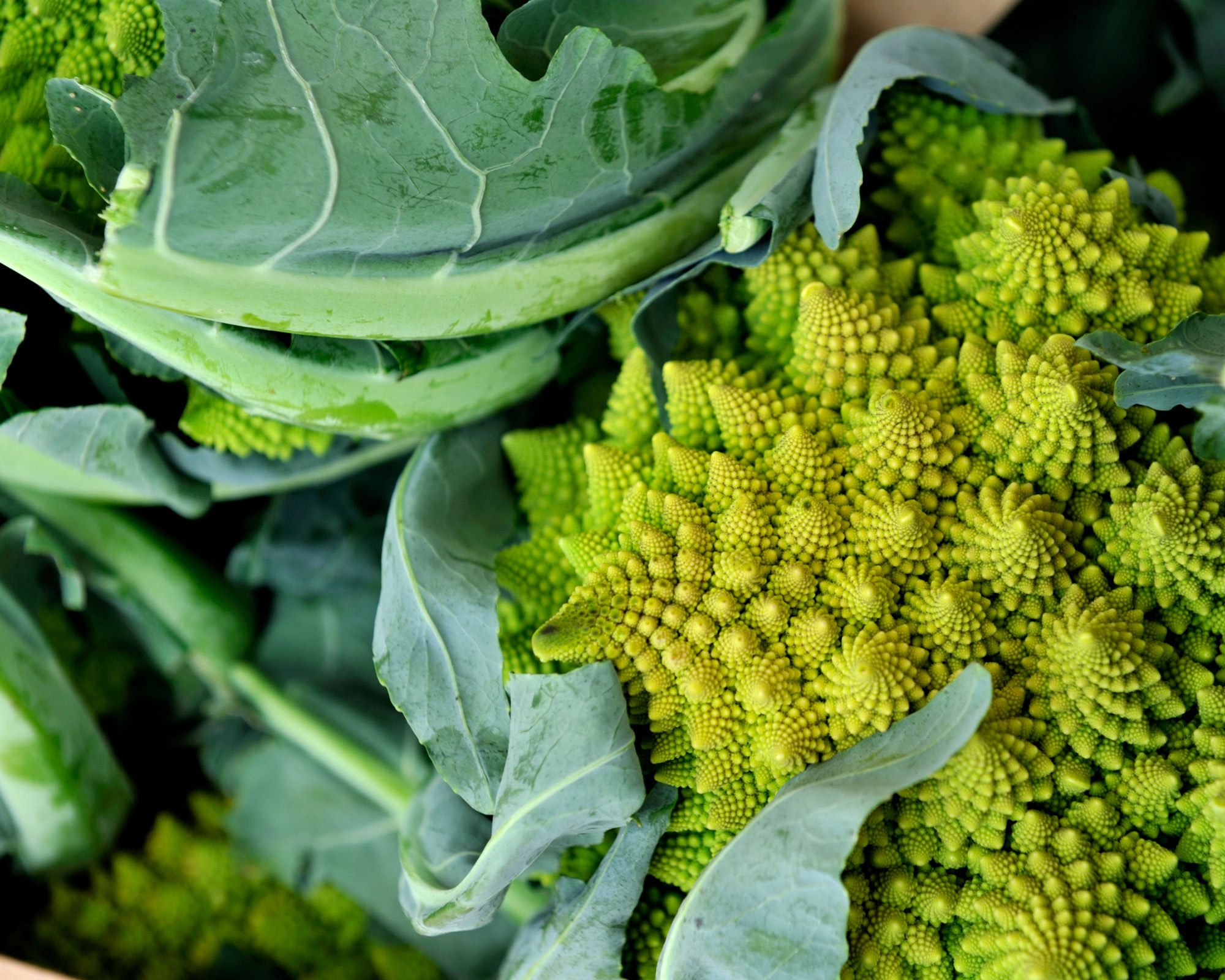
Romanesco ‘Veronica’ adds a glam flourish to the vegetable patch with its dreamy bright yellow fractals of flavor
‘Gardening glamour’ may not be a phrase you see often – but it perfectly describes the stunning neon yellow and bright green curds of Romanesco cauliflower.
Varieties for Romanesco (Brassica oleracea var. botrytis) range from the greeny gold geometric folds of ‘Veronica’ to the sunny orange turrets of ‘Ameresco F1’ (perfect for piccalilli). Still, for lovers of winter brassicas who already know how to grow cauliflowers and cabbage, the good news is there are no big cultivation differences to catch you out.
The June weeks are your cue to plant out any Romanesco seedlings you might have started under glass, and make final sowings in situ in zones 3-11. Make sure your planting site is sunny and sheltered and has a thick, moist alkaline soil, adding lime if necessary as well as well-rotted organic matter.
Plant deeply and firmly, water well and often, and keep an eye on weeds. Use taut netting to deter cabbage whites, and give plenty of space (18in/45cm) between each cauli for healthy roots and generously proportioned curds. That said, if you are making room nearby for thyme or rosemary or wanting to interplant quick-growing beets or radishes, you'll find Romanesco an amiable partner.
Bright and beautiful ‘broccoli apples’ (as they are also known) will be ready to harvest around 80-90 days from planting. Rich in vitamins C and K, iron and zinc, these nutty, crunchy curds should hit their peak from September to November for a unique feast of gold.

As assistant editor of Amateur Gardening magazine, Janey's gardening passion was fostered from an early age, when her amazing mum had her deadheading hydrangeas, mulching roses, and propagating strawberry plants from runners for school open days. She's also taken part in lots of conservation and rewilding projects for the RHS and TCV as a way of exploring her horticultural horizons.
